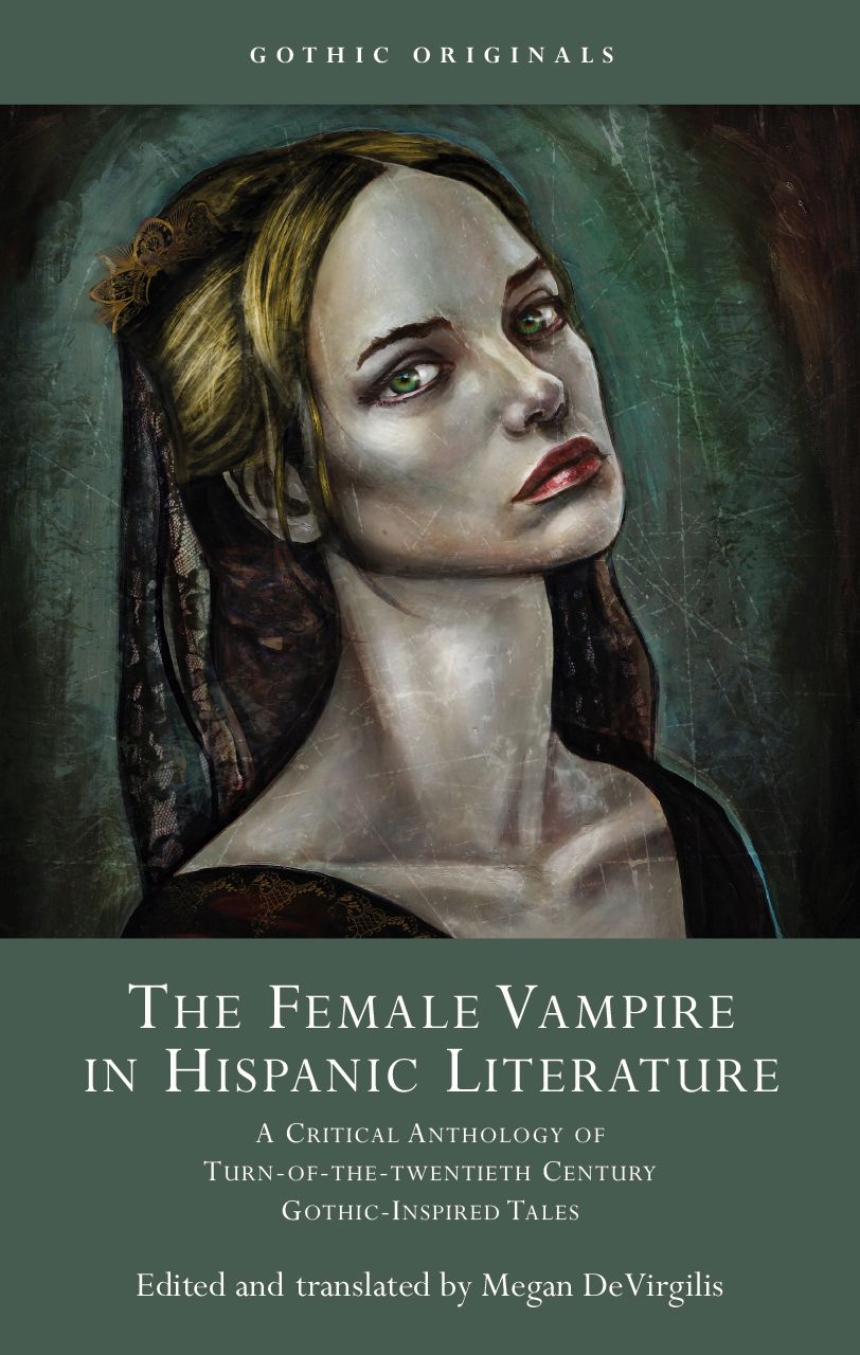The Female Vampire in Hispanic Literature
A Critical Anthology of Turn of the 20th Century Gothic-Inspired Tales
9781837721689
Distributed for University of Wales Press
The Female Vampire in Hispanic Literature
A Critical Anthology of Turn of the 20th Century Gothic-Inspired Tales
Exploring Spain and Latin America’s transhispanic Gothic connection.
This book exposes how Hispanic authors at the turn of the twentieth century broke from European and American Gothic models to contend with their anxieties over modernity and rising first-wave feminisms. The result was a trend of sympathetic female vampire characters, predating comparable Anglo and European representations by several decades.
In its analysis of the female vampire in Hispanic literature, this critical introduction also traces the Gothic’s origins and developments in Latin America and Spain, presenting a working theory of Gothic traditions in the form of a transhispanic literary phenomenon. The tales compiled in this collection include Leopoldo Lugones’s “The Female Vampire” (1899), Clemente Palma’s “The White Farmhouse” (1904), Antonio de Hoyos y Vinent’s “Mr. Cadaver and Miss Vampire” (1910), Carmen de Burgos’s “The Cold Woman” (1922), and Horacio Quiroga’s “The Vampire” (1927). All but two of these tales are translated into English for the first time, and all appear alongside scholarly annotations and accompanying analysis.
This book exposes how Hispanic authors at the turn of the twentieth century broke from European and American Gothic models to contend with their anxieties over modernity and rising first-wave feminisms. The result was a trend of sympathetic female vampire characters, predating comparable Anglo and European representations by several decades.
In its analysis of the female vampire in Hispanic literature, this critical introduction also traces the Gothic’s origins and developments in Latin America and Spain, presenting a working theory of Gothic traditions in the form of a transhispanic literary phenomenon. The tales compiled in this collection include Leopoldo Lugones’s “The Female Vampire” (1899), Clemente Palma’s “The White Farmhouse” (1904), Antonio de Hoyos y Vinent’s “Mr. Cadaver and Miss Vampire” (1910), Carmen de Burgos’s “The Cold Woman” (1922), and Horacio Quiroga’s “The Vampire” (1927). All but two of these tales are translated into English for the first time, and all appear alongside scholarly annotations and accompanying analysis.
Reviews
Table of Contents
Dedication
Acknowledgments
List of Abbreviations
I.Introduction
a.The Sympathetic Female Vampire: A Transhispanic Gothic Literary Phenomenon at the Turn of the Twentieth Century
b.Introductory Essays to the Tales in this Collection
c.Select Bibliography
II.Note on the Text
III.Translations of the Tales
a.‘The Female Vampire’ (1899), Leopoldo Lugones
b.‘The White Farmhouse’ (1904), Clemente Palma
c.‘Mr. Cadaver and Miss Vampire’ (1910), Antonio de Hoyos y Vinent
d.The Cold Woman (1922), Carmen de Burgos
e.‘The Vampire’ (1927), Horacio Quiroga
IV.Explanatory Notes
Acknowledgments
List of Abbreviations
I.Introduction
a.The Sympathetic Female Vampire: A Transhispanic Gothic Literary Phenomenon at the Turn of the Twentieth Century
b.Introductory Essays to the Tales in this Collection
c.Select Bibliography
II.Note on the Text
III.Translations of the Tales
a.‘The Female Vampire’ (1899), Leopoldo Lugones
b.‘The White Farmhouse’ (1904), Clemente Palma
c.‘Mr. Cadaver and Miss Vampire’ (1910), Antonio de Hoyos y Vinent
d.The Cold Woman (1922), Carmen de Burgos
e.‘The Vampire’ (1927), Horacio Quiroga
IV.Explanatory Notes

